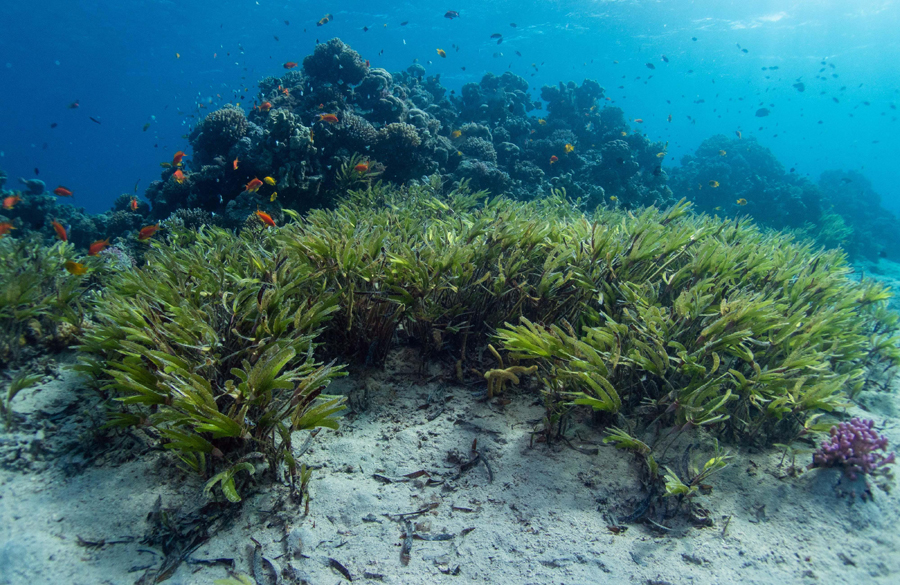SEAGRAS
Seagrass belongs to the realm of plants. Department of seed plants, class angiosperms also called flowering plants. With 226,000 known species, angiosperms are the plant group with the most species.
Only very few of them live underwater. About 16 species are known.
Most of them live in cooler waters.
The seaweed has roots, leaves and flowers. Reproduction is sexual by seed formation.
Seagrass meadows are an important part of the ecosystem. They literally function as the nursery for marine life. In addition, many animal species, such as fish, snails, turtles and manatees, feed on eelgrass.
In warm waters, like the Red Sea, one finds only few sea grass types. The most widespread are the 3 types.
Clump seagrass (Cymodocea serruluta)
Widespread in shallow lagoons. The broad leaves, 4-9 mm, are curved, bushy with short leaves.

Canopy seagras (Thalassodendron ciliatum)
Can be found in semi-sheltered areas and at the foot of reefs. The wide curved leaves, up to 1.4 cm wide, are up to 15 cm long.

Ribbon seagras (Halodule universis)also known as Dugong seaweed
Populated in flat 0.5 -6 m depths of protected bays.Narrow phylloids, 5mm, growing flat directly on the rootstock.

Photos: Johann Vifian
Sources: Red Sea coral reef guide Ewald Lieske / Robert Meyers
